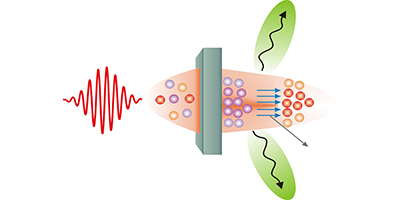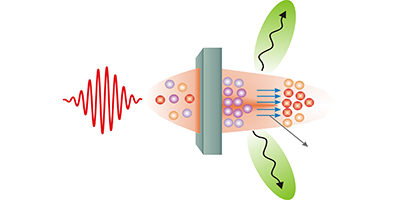Powering Up Terahertz Sources
Terahertz (THz) radiation—the band of frequencies falling between the microwave and visible range—can pass through materials that block light and couple to important rotational, vibrational, or electronic degrees of freedom of solids and molecules. Many applications could take advantage of these properties, from wireless communications to imaging of biomolecules or semiconductor wafers. But a key stumbling block for THz technologies is the development of sufficiently powerful sources. Now, as reported in Physical Review Letters, Amrutha Gopal at the Friedrich Schiller University Jena, Germany, and co-workers have demonstrated a laser-based source that emits short THz pulses with the highest peak power ever recorded in a laboratory.
Presently, the most powerful THz sources are at expensive, large-scale accelerator facilities, which generate THz radiation by bending a beam of relativistic electrons with a magnet. Gopal et al.’s solution instead exploits a high-power laser available at the Friedrich Schiller University Jena. The authors focus the laser’s femtosecond pulses onto micrometer-thick metallic foils. The intense pulses ionize the material, creating hot plasma that emits THz radiation. The setup delivers ten THz pulses per second with a broad spectrum ( – THz). Since the energy is concentrated in pulses only about half a picosecond long, their peak power is close to a gigawatt.
The scheme also generates a synchronous beam of energetic ions, which suggests an intriguing medical application: the THz beam could be used for detecting cancerous cells on human skin (which reflect THz wavelengths differently than normal cells), while the ions could be directed selectively at such cells for simultaneous treatment. – Matteo Rini





